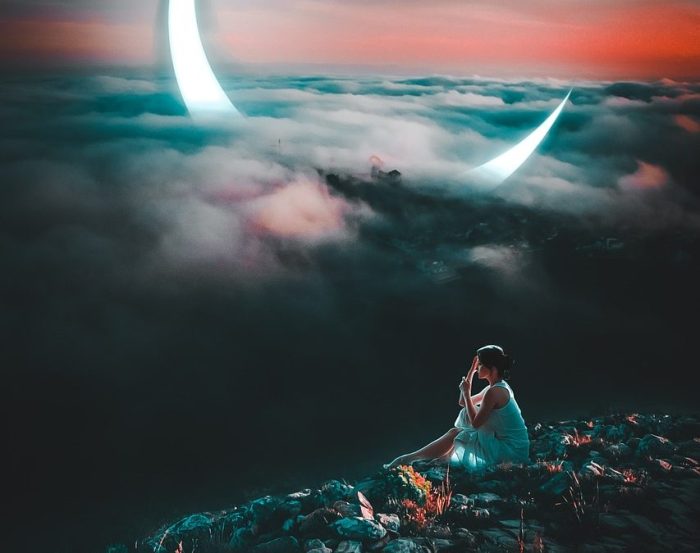
Embark on a journey to discover how graphic artists can keep their creativity flowing and inspiration alive, delving into various sources and methods that breathe life into their work.
Introduction to Staying Inspired as a Graphic Artist

In the world of graphic design, inspiration serves as the fuel that drives creativity and innovation. It is the spark that ignites the imagination and allows artists to create visually captivating work.
Maintaining inspiration is crucial for graphic artists as it directly impacts the quality and originality of their designs. Without inspiration, artists may struggle to come up with fresh ideas, resulting in stagnant and repetitive work.
Common Challenges Faced by Graphic Artists in Staying Inspired
Graphic artists often face challenges that can hinder their ability to stay inspired. These challenges can range from creative blocks to external factors that affect their motivation.
- Creative Block: Artists may experience periods where ideas seem elusive, making it difficult to start or complete a project.
- Comparison Trap: Constantly comparing oneself to others in the industry can lead to feelings of inadequacy and dampen inspiration.
- Burnout: Overworking or lack of breaks can drain creativity and leave artists feeling exhausted and uninspired.
- Lack of Feedback: Without constructive feedback or validation, artists may struggle to stay motivated and inspired to continue creating.
Seeking Inspiration in Painting
Painting has always been a rich source of inspiration for graphic artists. The use of color, technique, and subject matter in paintings can spark new ideas and creativity in graphic design projects. By studying famous painters and their works, graphic artists can gain valuable insights and incorporate painting techniques into their own projects for a fresh perspective.
Exploring Color in Painting
Color plays a crucial role in both painting and graphic design. Painters use color theory to evoke emotions and create visual impact in their artworks. Graphic artists can draw inspiration from the harmonious color palettes used by painters such as Vincent van Gogh and Claude Monet. By studying how these artists mix and blend colors, graphic designers can experiment with new color combinations in their projects to convey different moods and messages.
Adopting Painting Techniques
Painters often employ various techniques to create texture, depth, and movement in their artworks. Graphic artists can adapt these painting techniques, such as layering, blending, and brush strokes, to add visual interest to their designs. By experimenting with different painting techniques in digital tools, graphic designers can bring a unique and handcrafted feel to their work, setting them apart from traditional digital designs.
Finding Inspiration in Subject Matter
The subject matter of paintings can also inspire graphic artists to explore new themes and concepts in their designs. Studying the works of artists like Salvador Dali or Frida Kahlo can spark ideas for unique illustrations or storytelling in graphic design projects. By delving into the narratives and symbolism behind famous paintings, graphic artists can infuse deeper meaning and storytelling elements into their own creations.
Finding Inspiration in Performing Arts
Performing arts, such as theater, dance, and music, offer a rich source of inspiration for graphic artists. Elements like movement, emotion, and storytelling in these art forms can provide fresh perspectives and ideas for graphic design projects. Let’s explore how concepts from the performing arts can influence and enhance graphic art.
Translating Concepts into Graphic Art
- Movement: The dynamic and fluid movements in dance performances can inspire designs with a sense of flow and rhythm. Graphic artists can experiment with curved lines, gradients, and overlapping shapes to capture the essence of movement in their artwork.
- Emotion: The raw emotions expressed by actors on stage or musicians in a concert can evoke powerful feelings that can be translated into color choices, typography, and composition in graphic design. Artists can use bold colors, expressive brush strokes, and impactful imagery to convey emotion in their work.
- Storytelling: The narrative elements in theater productions and musical performances can spark creativity in graphic design by encouraging artists to tell a visual story through their work. Concepts like character development, plot twists, and setting can be incorporated into branding, illustration, or web design projects.
Impact on Graphic Design Trends
- Performance art often sets trends in fashion, music, and visual arts, influencing graphic design styles and techniques. For example, the vibrant costumes and stage designs in a Broadway musical may inspire a graphic designer to experiment with bold patterns and textures in their projects.
- Collaborations between performing artists and graphic designers can lead to innovative and boundary-pushing creations that blend the worlds of art and design. This cross-disciplinary approach can result in unique and memorable visual experiences for audiences.
Drawing Inspiration from Philosophy
Philosophical ideas and concepts have the power to ignite creativity in graphic design by providing a deeper understanding of the world and human existence. By exploring philosophical principles, graphic artists can infuse their work with layers of meaning and symbolism that resonate with viewers on a profound level.
Role of Symbolism and Meaning in Graphic Art
Philosophy offers a rich tapestry of symbols and meanings that can be translated into visual elements in graphic art. By incorporating philosophical symbols and concepts into their designs, artists can create work that communicates complex ideas and emotions in a compelling and thought-provoking manner.
- Utilizing symbols like the yin and yang, the tree of life, or the concept of the eternal return can add depth and significance to graphic compositions.
- Infusing meaning into every element of a design, from color choices to typography, can create a cohesive and impactful visual narrative that engages the audience on a deeper level.
Influence of Philosophical Perspectives on Visual Storytelling
Philosophical perspectives can profoundly influence the message and visual storytelling in graphic design by shaping the overall tone, mood, and narrative of the artwork. By drawing inspiration from philosophical texts and ideas, artists can imbue their creations with a sense of purpose and intellectual depth.
“The unexamined life is not worth living.” – Socrates
- Exploring existential themes like the nature of reality, the passage of time, or the meaning of life can lead to innovative and thought-provoking design solutions.
- By incorporating philosophical perspectives into their work, graphic artists can invite viewers to contemplate profound questions and engage with the artwork on a philosophical level.
Using Photography for Inspiration

Photography can be a powerful source of inspiration for graphic artists, offering unique perspectives, emotions, and moments captured in a single frame. By studying the techniques used in photography, graphic designers can enhance their own work and infuse it with a fresh creative approach.
Exploring Techniques in Photography
- Composition: Photographers carefully compose their shots to create visually appealing images. Graphic artists can learn from this by applying principles of balance, symmetry, and leading lines to their designs.
- Lighting: Understanding how light impacts a photograph can help graphic designers play with light and shadow in their compositions, adding depth and dimension to their work.
- Editing: Post-processing techniques in photography, such as color correction and retouching, can be translated into graphic design software to enhance the overall look and feel of a design.
Incorporating Photographic Elements into Graphic Art
- Texture: Photographs often capture intricate textures that can be incorporated into graphic designs to add depth and tactile qualities to the artwork.
- Color Palette: Drawing inspiration from a photograph’s color scheme can help graphic artists create harmonious color palettes for their projects.
- Mood and Emotion: Photographs evoke a wide range of emotions, which can serve as a starting point for creating designs that resonate with viewers on a deeper level.
Finding Inspiration through Short Fiction
Short fiction can serve as a powerful source of inspiration for graphic artists, sparking imagination and fueling creativity in their design work.
Impact of Narrative Storytelling
Narrative storytelling in short fiction can ignite the creative spark within graphic artists by introducing them to new worlds, characters, and plotlines that challenge their perspectives and push them to think outside the box.
Influence of Character Development, Plot Twists, and Settings
- Character Development: The depth and complexity of characters in short stories can inspire graphic artists to create visually compelling designs that evoke emotions and tell stories.
- Plot Twists: Unexpected plot twists in short fiction can encourage graphic artists to experiment with unconventional ideas and visual narratives in their projects.
- Settings: Vivid descriptions of settings in short stories can inspire graphic artists to explore new color palettes, textures, and visual elements in their designs.
Translating Short Fiction Themes into Graphic Design Projects
Graphic artists can translate themes and concepts from short fiction into their design projects by:
- Creating mood boards based on the atmosphere of a short story.
- Designing characters inspired by the personalities in a short fiction piece.
- Experimenting with typography and layout to reflect the narrative structure of a short story.
- Using symbolism and visual metaphors to convey the themes of a short fiction work.
Exploring Visual Graphic Arts for Inspiration
When it comes to finding inspiration as a graphic artist, exploring visual graphic arts can be a great source of creativity and new ideas. By delving into different styles, movements, and techniques within the realm of visual arts, graphic designers can expand their artistic horizons and bring fresh perspectives to their work.
Studying historical art movements such as surrealism, cubism, or pop art can provide valuable insights into how these artistic styles have influenced modern graphic design. By examining the principles, color palettes, and visual elements of these movements, designers can adapt and incorporate them into their own creations.
Styles, Movements, and Techniques in Visual Graphic Arts
- Researching different art styles like impressionism, abstract expressionism, or minimalism
- Exploring techniques such as pointillism, collage, or photomontage
- Studying the use of color, composition, and texture in various art movements
Historical Art Movements and Modern Graphic Design
- Understanding how surrealism’s dream-like imagery can inspire imaginative and whimsical graphic designs
- Adapting the geometric shapes and fractured forms of cubism for dynamic and unconventional layouts
- Utilizing the bold colors and iconic imagery of pop art to create vibrant and engaging graphic compositions
Tips for Studying Visual Graphic Arts
- Visit art museums, galleries, and exhibitions to see original artworks up close
- Read books, articles, and journals on art history and theory to deepen your knowledge
- Attend workshops, lectures, and classes to learn new techniques and approaches from art professionals
In conclusion, staying inspired as a graphic artist is a dynamic process fueled by exploration and experimentation, leading to endless possibilities for creativity and innovation in the realm of design.
FAQ
How can I overcome creative blocks as a graphic artist?
Try exploring new art forms, taking a break to refresh your mind, or collaborating with other artists for fresh perspectives.
What role does self-care play in maintaining inspiration?
Self-care is crucial for creative energy, so make time for activities that rejuvenate you and keep a healthy work-life balance.
How can I stay motivated during challenging projects?
Break down the project into smaller tasks, seek feedback from peers, and remember to celebrate small victories along the way.





